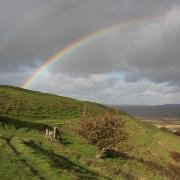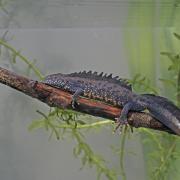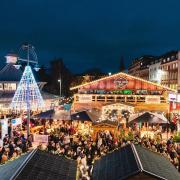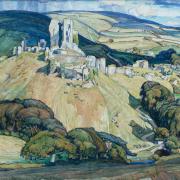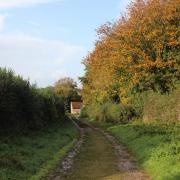Dorset's glorious coastline is home to a wide variety of marine flora and fauna. There are lots of ways to learn more about our coastline and sea, especially during National Marine Week - July 27 to August 11 – which Dorset Wildlife Trust will be celebrating with a whole raft of marine themed fun activities.
Want to peak into an underwater world? Pick up a waterproof guide at the Fine Foundation Wild Seas Centre at Kimmeridge Bay for their underwater snorkelling trail taking in some of the nearby rockpools and ledges. As you float quietly above the seabed, you might spot fish like Montagu’s blenny, large wrasse, Connemara clingfish and shoals of small fish darting amongst colourful rainbow wrack and coralline seaweed.
If you prefer dry land, there are interactive marine displays in the Wild Seas Centre. And there’s a fantastic cliff-top vantage point above Kimmeridge Bay, perfect for spotting large marine mammals like seals and dolphins, or if you’re really lucky, a basking shark.
The Fine Foundation Wild Chesil Centre on Chesil Beach also makes for a fun-packed family day out. Set beside the Fleet Lagoon, the largest tidal lagoon of its kind in the UK, the centre is a great base for exploring this unique coastal habitat. As one of the most important Marine Protected Areas in the country, it can also be explored by boat with a trip on the Fleet Explorer. Trips last one hour and run from Wednesday to Sunday (weather dependent).
Visit dorsetwildlifetrust.org.uk to find out more about our coastal visitor centres.

Species of the Month: Emperor Dragonfly
Keep an eye on freshwater habitats like ponds and ditches in July, and you might spot these large, impressive insects which are on the wing from June to August. Males have pale blue bodies with a green thorax (pictured), while females are a less vibrant green-blue colour. The emperor dragonfly catches and often eats its prey on the wing. This is the Dorset Wildlife Trust species of the month, so if you see one, head to dorsetwildlifetrust.org.uk/sotm to record your sighting.

Wildflower of the Month: Kidney Vetch
Flowering from June to September, kidney vetch has clusters of small, yellow flowers sitting atop woolly cushions (pictured). It is a distinctive feature of Dorset’s sand dunes, chalk grassland and cliffs at this time of year. Though its small flowers are mainly yellow, they can also be orange and red. Each flower has its own hairy calyx (containing the sepals), giving the flower cluster its woolly appearance. The leaves are divided into narrow leaflets that are silky and white underneath.

National Bog Day
This annual event on July 28 raises awareness of the important role bogs play in our ecosystems including Dorset’s bogs, mires, and fens. Bogs act as carbon sinks, locking up carbon dioxide and reducing greenhouse gas emissions. They also provide vital water storage on heathland habitats, acting as an oasis for specialised plants such as the carnivorous round-leafed sundew, and rare invertebrates like the raft spider. Learn about the Dorset Peat Partnership and its work on bog habitats at dorsetwildlifetrust.org.uk.




